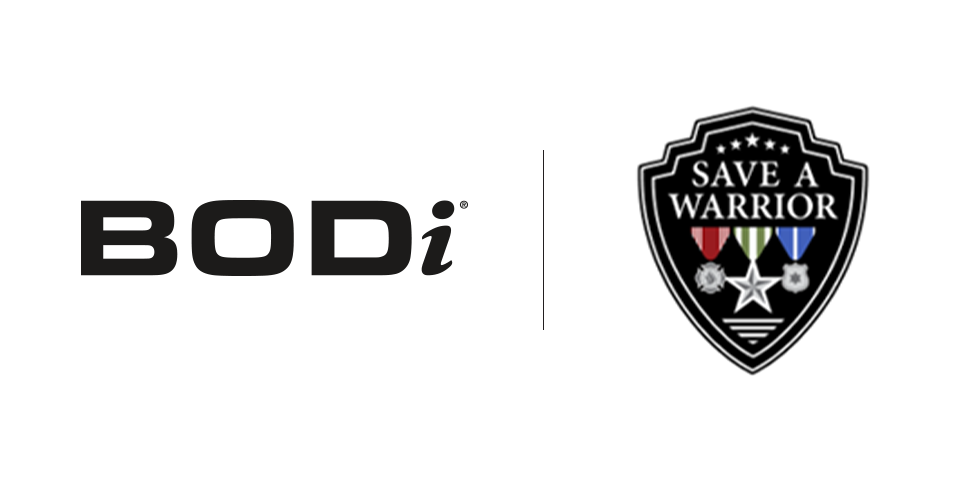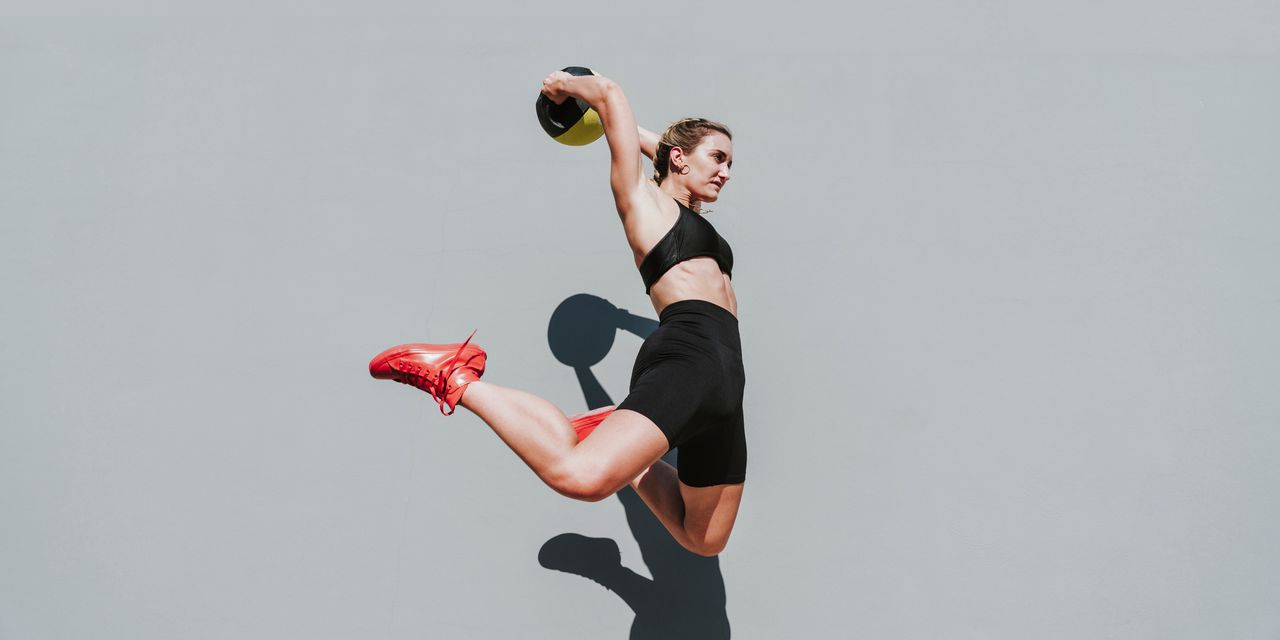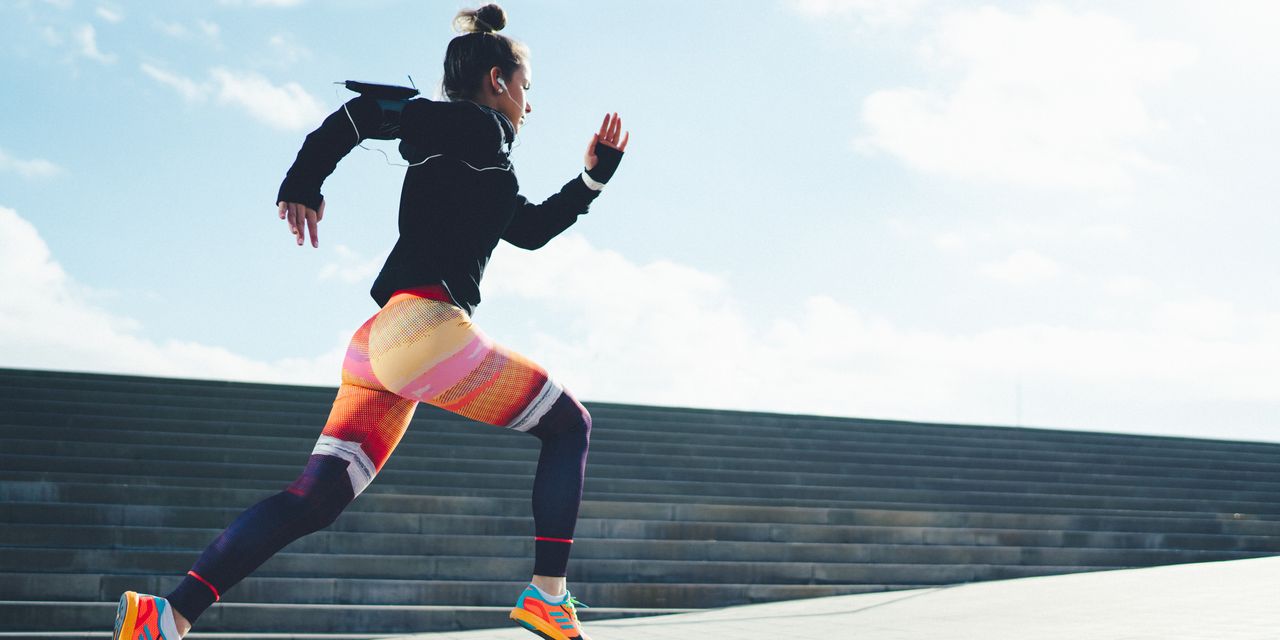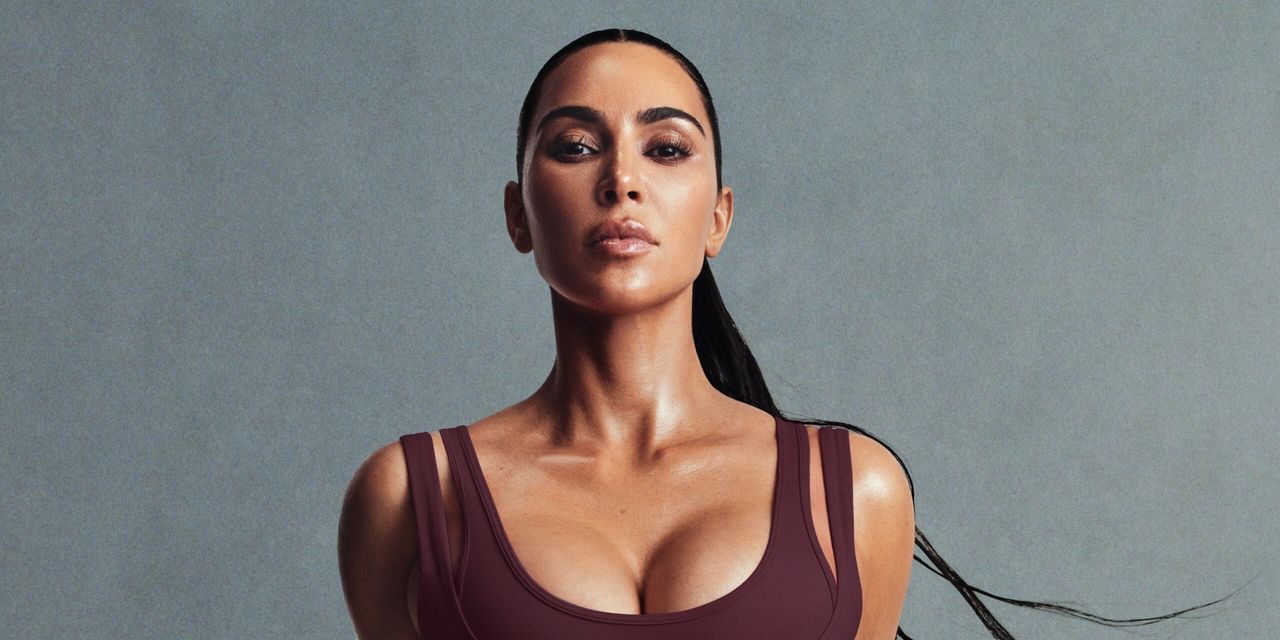When Was the Last Time You Replaced Your Nikes? How to Pick Your Next Pair
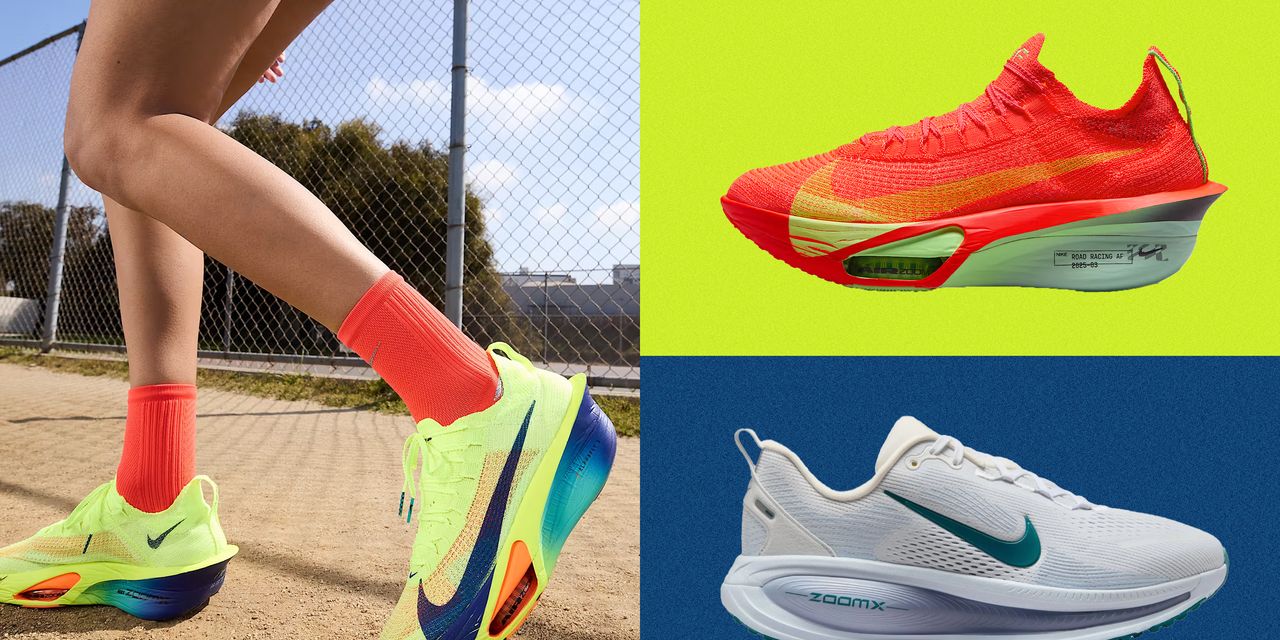
All products featured on Self are independently selected by our editors. However, we may receive compensation from retailers and/or from purchases of products through these links.
When we set out to find the best Nike running shoes, we had our work cut out for us. Between the brand’s reliable road running shoes, trail runners, snappy speed trainers, and street-savvy sport-style options, it’s safe to say the Swoosh has a pair of sneakers for pretty much anyone interested in picking up the pace. So we turned to running experts, podiatrists, and SELF staffers to narrow down the list and find the best of the best. Shop our picks below, and read on to see what makes Nike the top-tier brand that it is.
Our top picks
- Best Daily Trainer: Nike Vomero 18, $155
- Best for Beginners: Nike Pegasus 41, $140
- Best for Cushioning: Nike Invincible 3, $190
- Best Cross Trainer: Nike Free Metcon 6, $120
- Best for Trails: Nike Pegasus Trail 5, $155
- Best for Race Day: Nike Alphafly 3, $295
- Best for Speed Training: Nike Zoom Fly 6, $180
- Most Stylish: Nike P-6000, $110
Thinking about adding a pair of Nikes to your rotation? Just do it.
Best Daily Trainer: Nike Vomero 18
Need a workhorse of a shoe that works well for pretty much any kind of run? You won’t find a better option than the Vomero, a favorite among running experts and SELF staffers alike. Shannon Sangster, a Detroit-based runner, triathlete, and founder of the League of Champs sports podcast, tells SELF that his pair keeps all areas of his foot comfortable, from the ample padding on the tongue to the cushioned, responsive forefoot. So you can trust it’ll provide a soft landing and help your feet spring forward.
Sangster also notes that the Vomero provides such a pleasant ride that it’s not uncommon to see some of Nike’s elite long-distance runners wearing it as part of their sneaker rotation. Because everyone needs a solid pair of training shoes.
Sizes: US 5 to 12 | Widths: Medium | Weight: 9.30 ounces | Heel-to-toe drop: 10 millimeters
Best for Beginners: Nike Pegasus 41
“The Pegasus is a great neutral shoe that will work for just about anyone, and it’s uncomplicated enough to be accessible for beginners,” Caroline Grainger, runner and ISSA-certified personal trainer at FitnessTrainer, tells SELF. The latest version, the Pegasus 41, won a SELF Sneaker Award last year for its do-it-all design—pretty much anyone can step into this sneaker, hit the road, and enjoy its balanced (read: not too stiff; not too firm) ride.
And even if you’re a seasoned runner, the Pegasus is versatile enough to deserve a spot in your closet too. One of our Awards testers has plenty of miles under their belt and loved their pair for treadmill runs, road runs, and even sprints.
Sizes: US 5 to 12 | Widths: Medium and wide | Weight: 8.80 ounces | Heel-to-toe drop: 10 millimeters
Best for Cushioning: Nike Invincible 3
If you’re looking for a max-cushioned shoe that still keeps you cool on long runs, the 2023 Sneaker Award–winning Invincible 3 strikes that balance. “The shoes make me feel like I’m running on clouds,” Stef Baron, a NYC-based marathoner, tells SELF. Plus, Nike’s Flyknit fabric keeps air flowing, to help manage sweaty feet.
While it has a seriously plush, comfortable ride, the Invincible 3 also provides a fair amount of support. According to our tester, it’s much more stable than previous iterations of the Invincible, which made her feel confident to take it out on longer runs.
Sizes: US 5 to 12 | Widths: Medium | Weight: 9.10 ounces | Heel-to-toe drop: 9 millimeters
Best Cross Trainer: Nike Free Metcon 6
If you spend more of your time in the weight room than on the treadmill, Nike has you covered. Its bestselling Free Metcon cross trainer is stable enough for lifting but nimble enough for HIIT classes and more dynamic moves. A previous model won a Sneaker Award, and the latest iteration has only improved upon its design.
“Wearing these shoes was like having the best of both worlds—I could feel my toes and heels on the ground, but my arches were lifted and supported,” Jessica Kasparian, SELF’s commerce writer who tested the Free Metcon 6 earlier this year, says. “It’s so helpful to be able to feel the ground well, similar to how it feels when I’m in socks, but without any sliding because of the grippy soles.”
Sizes: Us 5 to 15 | Widths: Medium | Weight: 8.90 ounces | Heel-to-toe drop: 4 millimeters
Best for Trails: Nike Pegasus Trail 5
Another SELF Sneaker Award–winner, the Pegasus Trail is technically a hybrid shoe, meaning it can perform on dirt paths and roads alike—our tester wore it seamlessly from a trail run to brunch in New York City. Its outsole is grippy enough for pebbly or wet conditions, while its foam midsole provides tons of energy return. (If you’re looking for a more durable and protective trail running shoe, consider the Nike Zegama 2 instead.)
Baron says she mainly uses her Pegasus Trails for runs ranging from three to 10 miles, but they would also bode well for longer efforts, thanks to its lightweight, responsive foam padding. Bonus points: They’re also available with a waterproof Gore-Tex lining, for those who don’t take a rain check for their runs.
Sizes: US 5 to 12 | Widths: Medium | Weight: 8.60 ounces | Heel-to-toe drop: 9.50 millimeters
Best for Race Day: Nike Alphafly 3
According to Christa Sgobba, SELF’s director of fitness and food, you get what you pay for in this souped up, Sneaker Award–winning, road racing shoe. When she put the Alphafly 3 to the test, she was immediately impressed by how bouncy and genuinely fun it was to wear.
“The energy return from the foam cushion, carbon fiber plate, and Air Zoom pods is incredible, pushing me to a quicker (and easier) turnover with each stride,” she wrote in her review. “My miles passed relatively easily and I found myself hitting paces quicker than I’d planned. I felt fast, which, as any runner will tell you, is an awesome feeling.”
Sizes: US 5 to 12 | Widths: Medium | Weight: 6.10 ounces | Heel-to-toe drop: 8 millimeters
Best for Speed Training: Nike Zoom Fly 6
If you’re looking for a shoe for training runs, like interval workouts that mix fast and slower paces, the Zoom Fly should be on your list. With its slightly wider base and bouncy midsole, it’s built for both stability and propulsion, Jossie Abraham, DPM, a podiatric surgeon based in Norwalk, Connecticut, tells SELF.
According to Baron, that combo is pretty darn powerful when you put it to the pavement: “When I wear them, I almost feel like the base of this shoe is propelling me forward.” She uses them for shorter runs throughout the week, which mainly consist of tempo runs (at slightly slower than 5K pace) and hill repeats.
Sizes: US 5 to 12 | Widths: Medium | Weight: 7.70 ounces | Heel-to-toe drop: 8 millimeters
Most Stylish: Nike P-6000
In addition to its straightforward running and fitness shoes, Nike has a ton of cool Y2K styles too. They’re inspired by some of the brand’s most iconic running shoes, but they aren’t made for racking up miles—they’re better suited to your favorite post-jog activities like strolling the neighborhood, running errands, and looking exceedingly stylish at brunch.
The P-6000 is one such retro running model, with the seal of approval from SELF’s social media manager, Bianca Richards. Simply put, it goes with everything: sundresses, jeans, leggings—you could probably even get away with wearing it to the office. It’s sufficiently padded for casual walks and has breathable mesh throughout its upper.
Sizes: US 5 to 16.5 | Widths: Medium | Weight: N/A | Heel-to-toe drop: N/A
Frequently asked questions about Nike
What makes Nikes special?
Nikes are some of the most recognizable sneakers out there: They’re sleek, performance-driven, and available in of-the-moment colorways. They aren’t all looks, though. “To set themselves apart, they use innovative design elements and cutting-edge technology focused on enhancing athletic performance and sustainability,” Elizabeth Daughtry, DPM, FACFAS, a podiatrist based in North Carolina, tells SELF. Nike’s efforts to reduce waste have led the brand to incorporate recycled and more sustainable materials into many of its top-selling pairs.
Dr. Daughtry points to Nike Air and Flyknit as two exceptional Nike technologies. The former appears in the midsole of Nike running shoes and uses pressurized air to increase the foam’s energy return and bounce. The latter is a material used in the upper of some Nikes—it’s strong and durable, yet lightweight and breathable.
Who should try Nike running shoes before other brands?
“For those who enjoy a more minimalist shoe with a narrow fit, Nike would be a good option,” Dr. Daughtry says, explaining that most Nike shoes aren’t suitable for people with flat or wide feet, and most aren’t designed to accommodate removable insoles. Their arch isn’t especially supportive, and their shape (including the toe box) skews narrow. Many models also run small, length-wise, according to the brand. If your feet are on the wider side, Asics and New Balance are worth checking out—a ton of their most popular styles come in multiple width options. But if you have narrower feet and high arches, Nikes were basically made for your feet.
Related:
- The Best Adidas Running Shoes to Try This Year
- Podiatrists Love Hokas—Here Are the Best Pairs for Every Activity
- The Best Saucony Sneaker for Every Type of Runner
Get more of SELF’s great product recommendations delivered right to your inbox (for free!).


